Development and Application of Smart Construction Objects and Management System for an Efficient and Cost-Effective Safety Management
Abstract
:1. Introduction
2. Smart Construction Objects
2.1. Fire Detection
2.2. Worker Location Monitoring
2.3. Safety Hook Fastening Detection
2.4. Opening Detection
2.5. Table Lift Laser Guide
3. Smart Construction Management System
3.1. Efficacy of Smart Construction Objects
3.2. Management System for the Smart Construction Objects
3.3. Comparative Analysis with Previous Construction Work
4. Demonstration
4.1. Tunnel Construction
4.2. Discussion
5. Conclusions
- Five SCOs were developed to enhance safety and efficiency at construction sites, including fire detection, operator position monitoring, safety hook fastening detection, opening detection, and table lift laser guidance. The efficacy and technical value of these SCOs were evaluated using the tri-axial diagram method. Three key factors, awareness, autonomy, and communicativeness, were empirically evaluated. Results showed improved awareness and autonomy compared to previous studies’ smart construction objects, with effective information push and policy awareness.
- A smart construction management system was developed based on the developed SCOs. The system interacts with the integrated control system through smartphones and NFC tags, significantly improving construction site safety and reducing time and cost associated with unnecessary paperwork.
- Through multiple empirical applications of the SCO element technology and smart construction management system, construction time was reduced by over 40% and construction cost by over 70%. This was achieved through simplification of construction resource management procedures, such as Job Safety Analysis (JSA), Tool Box Meeting (TBM), Permit to Work (PTW), and nonconformity management.
- This study comprehensively considered the pros and cons of existing smart construction-related research and the effectiveness of smart construction element technologies, and conducted a comprehensive study on a construction method that could dramatically increase safety and productivity while being site-friendly. However, establishing the quantitative relationship between the functions of the developed system and the cost/time reduction effects, still remains an unresolved issue, urging further studies.
- This study also urges follow-up studies that attempt to build a better construction industry by introducing ICT convergence technology, which is rapidly developing along with the fourth industrial revolution for addressing potential concerns such as user satisfaction, cost-effectiveness, and ease of adoption.
Supplementary Materials
Author Contributions
Funding
Data Availability Statement
Acknowledgments
Conflicts of Interest
Appendix A
References
- Sepasgozar, S.M.E. Differentiating Digital Twin from Digital Shadow: Elucidating a Paradigm Shift to Expedite a Smart, Sustainable Built Environment. Buildings 2021, 11, 151. [Google Scholar] [CrossRef]
- Xiahou, X.; Wu, Y.; Duan, T.; Lin, P.; Li, F.; Qu, X.; Liu, L.; Li, Q.; Liu, J. Analyzing Critical Factors for the Smart Construction Site Development: A DEMATEL-ISM Based Approach. Buildings 2022, 12, 116. [Google Scholar] [CrossRef]
- Zhao, S.; Zhang, P.; Li, W. A Study on Evaluation of Influencing Factors for Sustainable Development of Smart Construction Enterprises: Case Study from China. Buildings 2021, 11, 221. [Google Scholar] [CrossRef]
- Kim, D. Safety Management System for a Large Construction Project Using Real-Time Location System. Ph.D. Thesis, Korea University, Seoul, Republic of Korea, 2011. [Google Scholar]
- Raja, P.S.; Prasada, R.Y. Study on Validation of Wholesaler Selection of Personal Protective Equipment to Improve Safety Performance in a Construction Organization in India. Int. J. Manag. Value Supply Chains 2013, 4, 17–24. [Google Scholar]
- Su, K.; Li, J.; Fu, H. Smart City and the Applications. In Proceedings of the 2011 International Conference on Electronics, Communications and Control (ICECC), Ningbo, China, 9–11 September 2011. [Google Scholar]
- Guzman-Acebedo, G.M.; Vazquez-Becerra, G.W.; Millan-Almaraz, J.R.; Rodriguez-Lozoya, H.E.; Reyes-Salazar, A.; Gaxiola-Camacho, J.R.; Martinez-Felix, C.A. GPS, Accelerometer, and Smartphone Fused Smart Sensor for SHM on Real-Scale Bridges. Adv. Civ. Eng. 2019, 2019, 6429430. [Google Scholar]
- Sabet, P.G.P.; Chong, H.Y. Pathways for the Improvement of Construction Productivity: A Perspective on the Adoption of Advanced Techniques. Adv. Civ. Eng. 2020, 2020, 5170759. [Google Scholar]
- Stefanic, M.; Stankovski, V. A Review of Technologies and Applications for Smart Construction. Civ. Eng. 2019, 172, 83–87. [Google Scholar]
- Liu, D.; Lu, W.; Niu, Y. Extended Technology-Acceptance Model to Make Smart Construction Systems Successful. J. Constr. Eng. Manag. 2018, 144, 04018035-1. [Google Scholar] [CrossRef]
- Li, C.Z.; Chen, Z.; Xue, F.; Kong, X.T.R.; Xiao, B.; Lai, X.; Zhao, Y. A Blockchain- and IoT-Based Smart Product-Service System for the Sustainability of Prefabricated Housing Construction. J. Clean. Prod. 2020, 286, 125391. [Google Scholar] [CrossRef]
- McCabe, B.Y.; Hamledari, H.; Shahi, A.; Zangeneh, P.; Azar, E.R. Role, Benefits, and Challenges of Using UAVs for indoor smart construction applications. In Computing in Civil Engineering 2017; ASCE: Reston, VA, USA, 2017; pp. 349–357. [Google Scholar]
- Xu, J.; Lu, W. Smart Construction from Head to Toe: A Closed-Loop Lifecycle Management System Based on IoT. In Proceedings of the Construction Research Congress 2018, New Orleans, LA, USA, 2–4 April 2018; pp. 157–168. [Google Scholar]
- Gbadamosi, A.Q.; Oyedele, L.; Mahamadu, A.M.; Kusimo, H.; Olawale, O. A Role of Internet of Things in Delivering Smart Construction. In Proceedings of the CIB World Building Congress 2019: Constructing Smart Cities, Hong Kong SAR, China, 17–21 June 2019. [Google Scholar]
- Niu, Y.; Lu, W.; Xue, F.; Liu, D.; Chen, K.; Fang, D.; Anumba, C. Towards the “Third Wave”: An SCO-Enabled Occupational Health and Safety Management System for Construction. Saf. Sci. 2019, 111, 213–223. [Google Scholar] [CrossRef]
- Niu, Y.; Lu, W.; Chen, K.; Huang, G.G.; Anumba, C. Smart Construction Objects. J. Comput. Civ. Eng. 2016, 30, 04015070. [Google Scholar] [CrossRef]
- Lundeena, K.M.; Dong, S.; Fredricks, N.; Lewis, C. Optical Marker-Based End Effector Pose Estimation for Articulated Excavators. Autom. Constr. 2016, 65, 51–64. [Google Scholar] [CrossRef]
- Liu, D.; Wu, Y.; Li, S.; Sun, Y. A Real-Time Monitoring System for Lift Thickness Control in Highway Construction. Autom. Constr. 2016, 63, 27–36. [Google Scholar] [CrossRef]
- Gong, J.; Yu, Y.; Krishnamoorthy, R.; Roda, A. Real-Time Tracking of Concrete Vibration Effort for Intelligent Concrete Consolidation. Autom. Constr. 2015, 54, 12–24. [Google Scholar] [CrossRef]
- Sung, C.; Kim, P.Y. 3D Terrain Reconstruction of Construction Sites Using a Stereo Camera. Autom. Constr. 2016, 64, 65–77. [Google Scholar] [CrossRef]
- Yi, W.; Chana, A.P.C.; Wang, X.; Wang, J. Development of an Early Warning System for Site Work in Hot and Humid Environments: A Case Study. Autom. Constr. 2016, 62, 101–113. [Google Scholar] [CrossRef]
- Teizer, J.; Cheng, T. Proximity Hazard Indicator for Workers-on-Foot near Miss Interactions with Construction Equipment and Geo-Referenced Hazard Areas. Autom. Constr. 2015, 60, 58–73. [Google Scholar] [CrossRef]
- Yang, K.; Ahn, C.R.; Vuran, M.C.; Aria, S.S. Semi-Supervised Near-Miss Fall Detection for Ironworkers with a Wearable Inertial Measurement Unit. Autom. Constr. 2016, 68, 194–202. [Google Scholar] [CrossRef]
- Le, Q.T.; Lee, D.Y.; Park, C.S. A Social Network System for Sharing Construction Safety and Health Knowledge. Autom. Constr. 2014, 46, 30–37. [Google Scholar] [CrossRef]
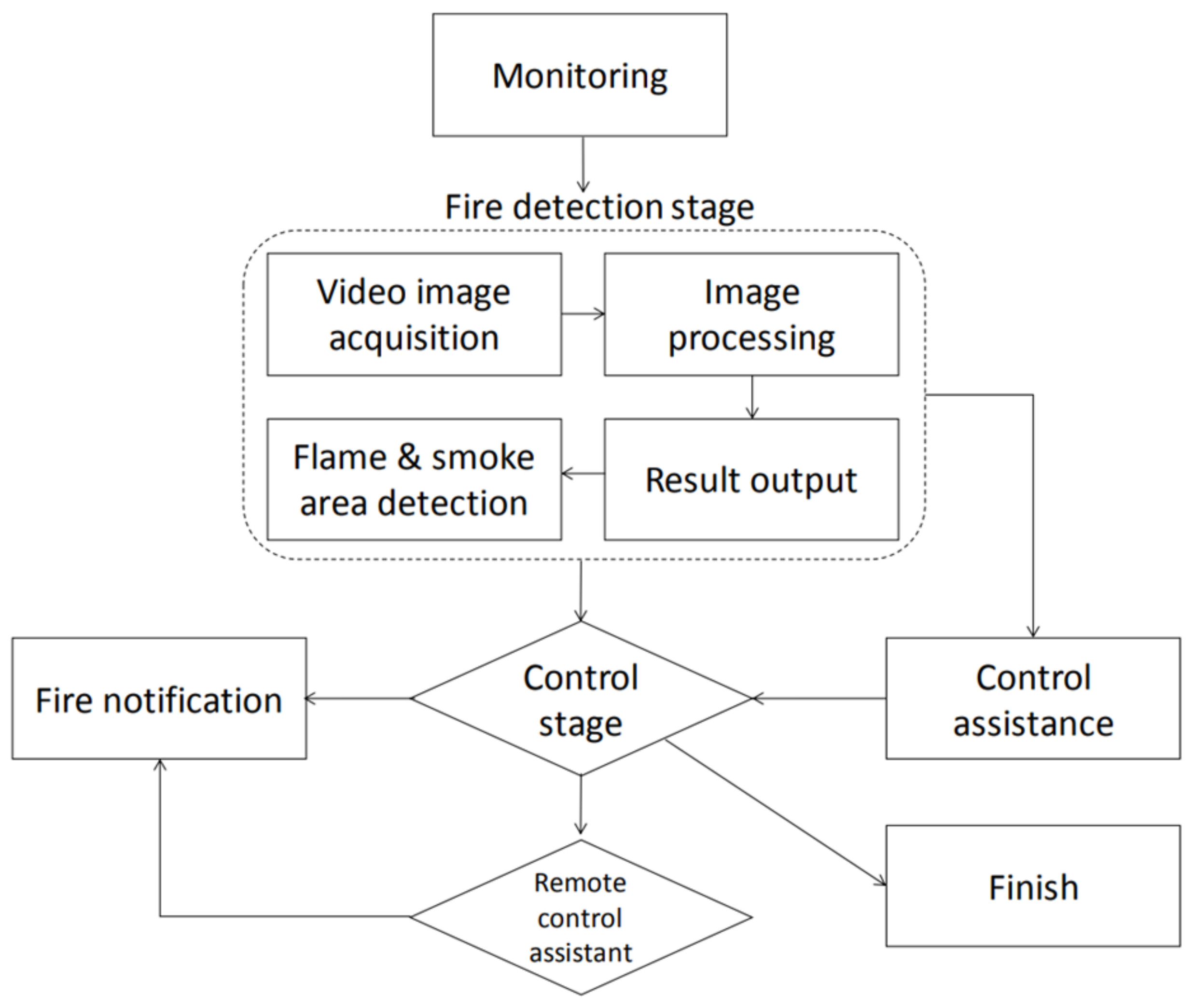
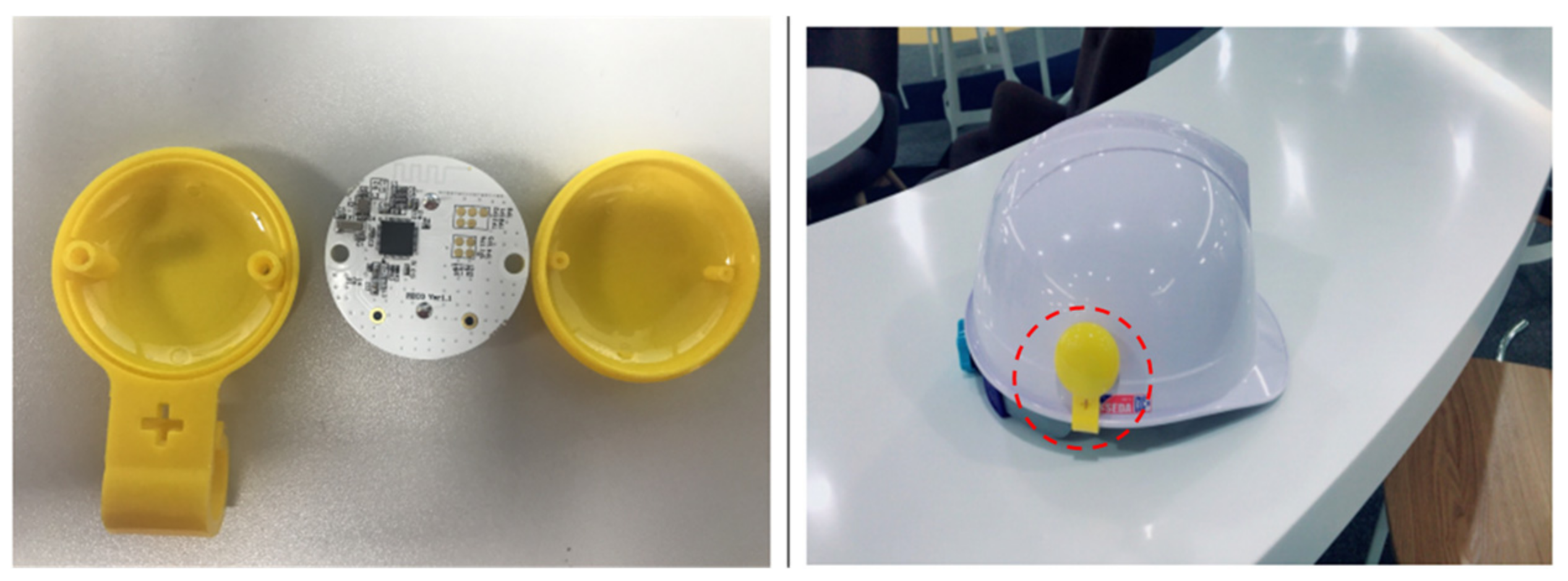



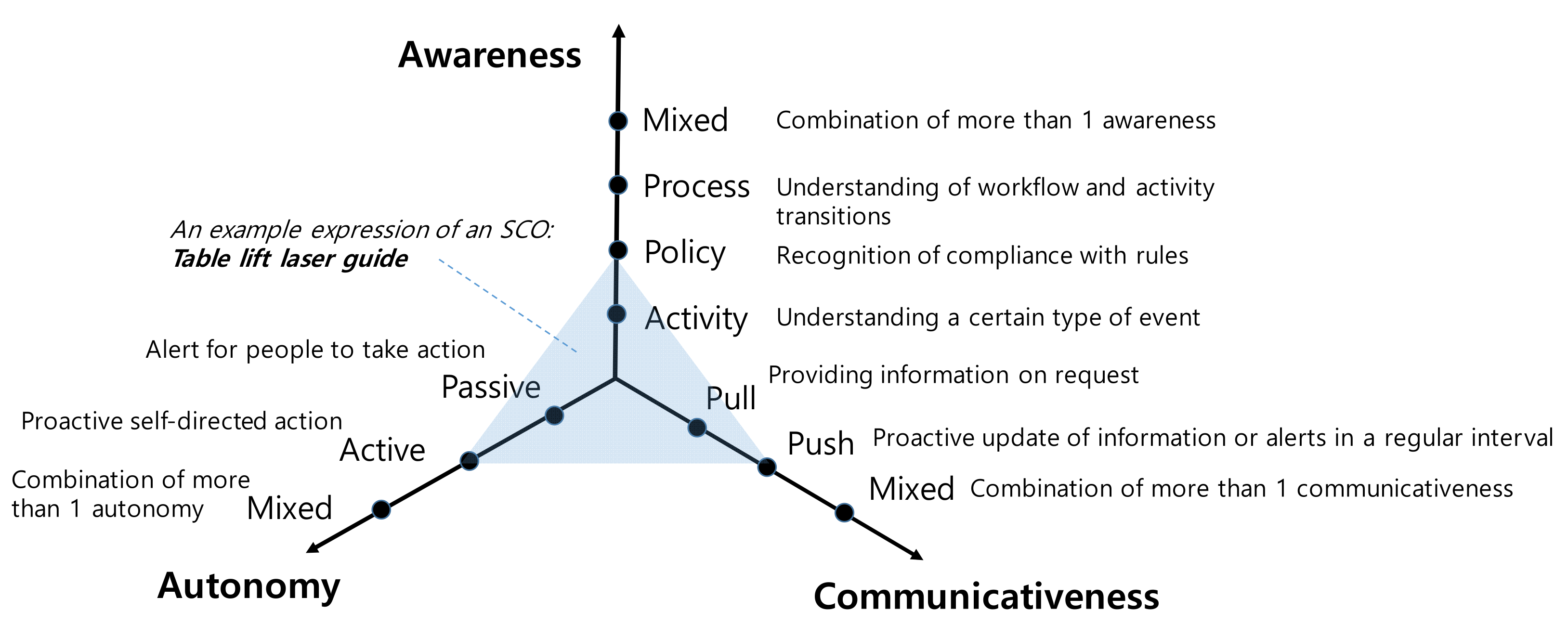


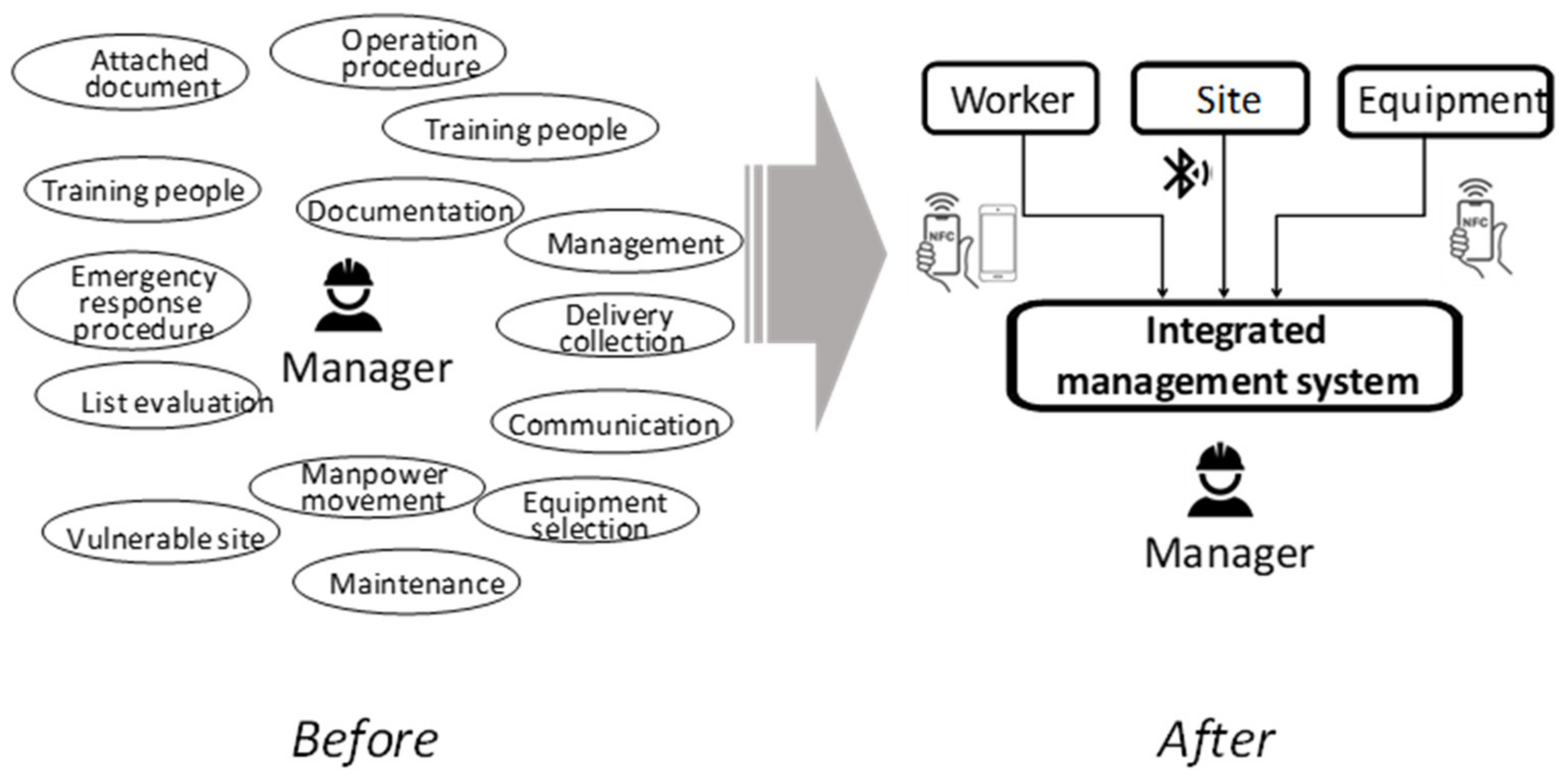
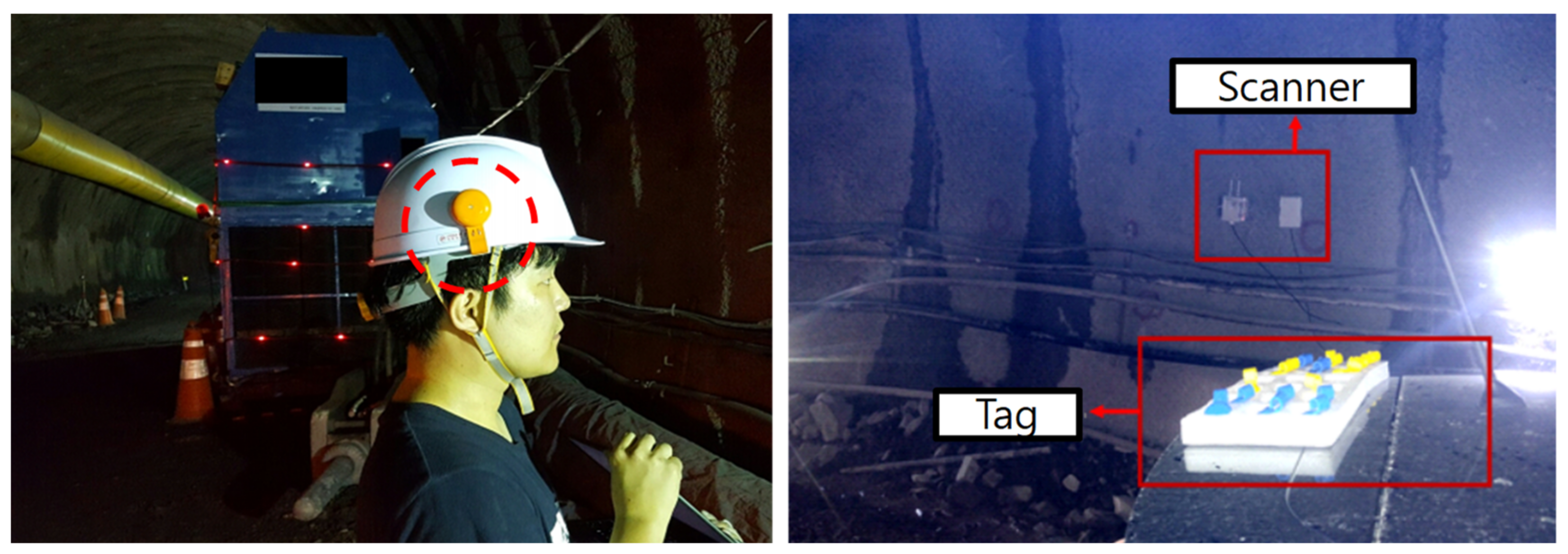
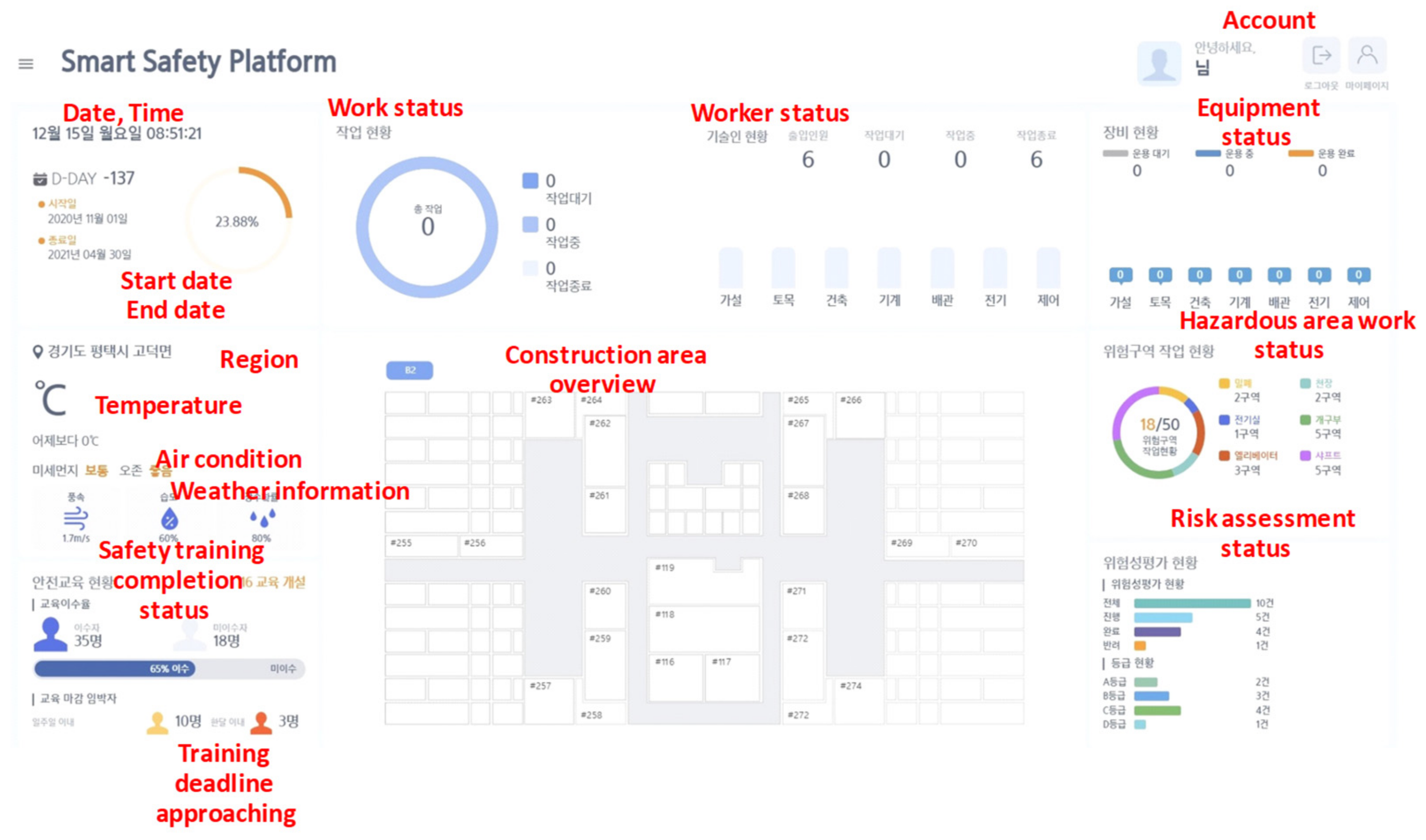
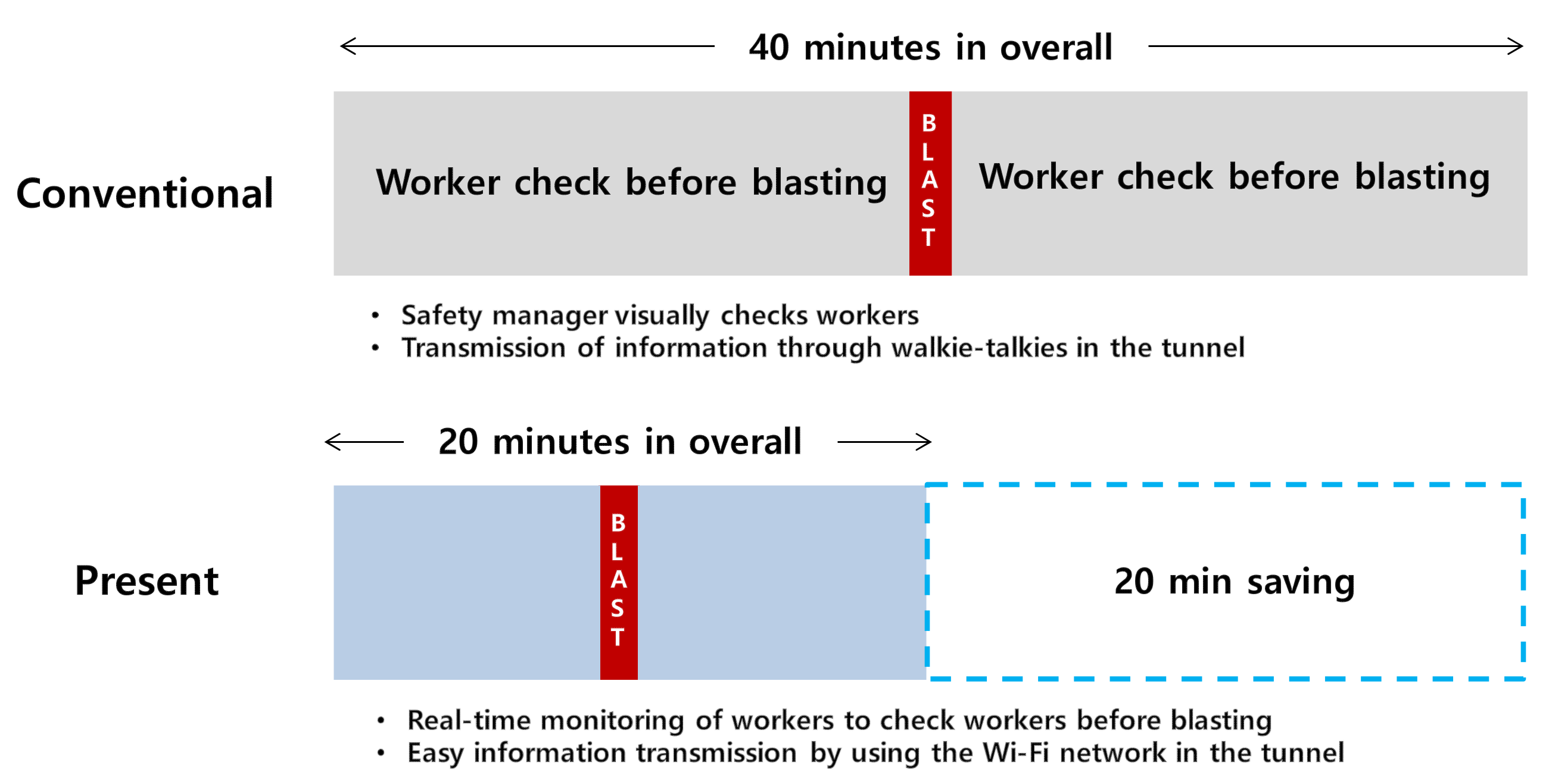

| No. of Studies (2010–2022) | Importance | Practicality | Need for Further Development | ||
|---|---|---|---|---|---|
| Construction Monitoring Technology | Equipment monitoring | 46 | High | Moderate | Low |
| Road monitoring | 4 | Low | Low | Moderate | |
| BIM technology | 2330 | High | High | Low | |
| Smart construction system | 64 | High | High | High | |
| Occupational Safety Technology | Health monitoring | 98 | High | Moderate | Moderate |
| Hazardous area safety | 51 | High | High | High | |
| Equipment safety | 22 | High | Moderate | Moderate | |
| Worker position monitoring | 51 | High | High | High | |
| Disaster Prevention Technology | Fire detection | 13 | High | High | High |
| Equipment risk | 21 | High | Low | Low | |
| Earthquake monitoring | 7 | Low | Moderate | Low | |
| Resource and site Management Technology | Worker position monitoring | 82 | High | High | High |
| Waste treatment technology | 237 | High | Moderate | Moderate | |
| BIM/CAD/CAM | 107 | Moderate | Moderate | Low |
| SCO | Description | Related image |
|---|---|---|
| Fire detection | Fire and smoke incidents are identified through advanced AI-powered real-time image processing of round-the-clock CCTV footage. Once a fire or smoke event is detected, prompt notification is relayed to the manager. This proactive approach not only mitigates potential harm to individuals and assets, but also enables cost savings by minimizing the need for human resource deployment. |  |
| Worker location monitoring | This technology incorporates a location tag integrated into workers’ helmets. By utilizing web and app platforms to identify the precise whereabouts of employees, several benefits are realized. Firstly, it enhances the efficiency of managers by providing real-time information on worker locations. Additionally, it enables effective control over access to hazardous areas and enables rapid response during emergencies through the utilization of location data. Furthermore, this system includes an SOS button that allows workers to immediately notify the manager in the event of an emergency. In cases where a worker is unable to press the SOS button due to incapacitation, the system automatically activates the SOS function by detecting any significant impact or shock. Moreover, the integration of LED lights ensures visibility in dark environments, further enhancing safety measures. | 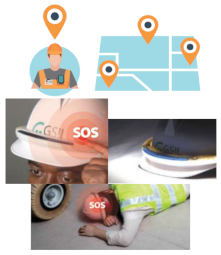 |
| Safety hook fastening detection | It is a system that determines whether or not a worker is engaged with a safety hook when working in high places, and provides notification through sound and platform. Through the web/app, an administrator can check whether the safety hook is fastened in real time. It does not require an independent safety hook, but only requires a dedicated piece of hardware applied to the existing safety hook. | 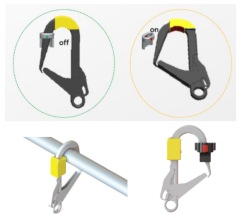 |
| Opening detection | The system incorporates a Time of Flight (TOF) sensor, which is affixed to the opening cover. This sensor accurately calculates the distance by measuring the time it takes for emitted light to bounce back from an object, enabling precise spatial recognition. By establishing a data collection and alarm system through Bluetooth communication, the system assesses whether the opening is in an appropriate state and if it exceeds the designated threshold duration. The resulting data is then transmitted to the control system for further analysis. |  |
| Table lift laser guide | This hardware is installed on the table lift, projecting a virtual square laser line on the ceiling. This setup serves to verify the working position before ascending the table lift, thereby preventing repetitive and hazardous tasks resulting from positioning errors. Furthermore, it enables the system to anticipate potential collisions with pipes and other structures that may occur during the ascent, enhancing overall safety precautions. |  |
| Events to Manage | SCOs | Pre-Set Condition for Awareness | Dangerous Situations | Awareness | Communicativeness | Autonomy |
|---|---|---|---|---|---|---|
| Critical environmental situation | Fire detection | Threshold luminance | Threshold luminance ≤ luminance | Policy awareness | Information push | Passive autonomy |
| Failure to fasten the safety hook | Safety hook fastening detection | - | Hook unfastened when needed | Mixed awareness (activity and policy) | Information push | Mixed autonomy |
| Carelessness of the holes and openings in the floor | Opening detection | Criteria for how long a specific opening should be open | Hole/opening open without need | Mixed awareness (activity and policy) | Information push | Mixed autonomy |
| Failure to maintain safe distance from parts of machine/vehicle | Table lift laser guide | Distance detection between worker and moving parts | Distance ≤ buffer distance | Policy awareness | Information push | Active autonomy |
| Failure to maintain safe distance between on-foot worker and restricted area | Worker location monitoring | Distance detection between worker and restricted area | Distance ≤ buffer distance | Policy awareness | Information push | Passive autonomy |
| Classification | Present | Previous |
|---|---|---|
| Material cost | 28,617,480 | 14,782,812 |
| Labor cost | 7,598,358 | 27,434,236 |
| Expenses | 3,539,090 | 5,630,319 |
| Pure construction cost | 39,754,928 | 47,847,367 |
| Total | 44,168,634 | 56,108,518 |
| Classification | Present Study | Conventional Construction | |
|---|---|---|---|
| Construction cost | 44,168,634 | 56,108,518 | |
| Maintenance cost | Inspection | 408,769 | - |
| Maintenance | 1,117,275 | 17,768,190 | |
| Subtotal | 1,526,044 | 17,768,190 | |
| Total (monthly) | 44,168,634 | 73,876,708 | |
| Total (annually) | 62,481,162 | 269,326,798 | |
Disclaimer/Publisher’s Note: The statements, opinions and data contained in all publications are solely those of the individual author(s) and contributor(s) and not of MDPI and/or the editor(s). MDPI and/or the editor(s) disclaim responsibility for any injury to people or property resulting from any ideas, methods, instructions or products referred to in the content. |
© 2023 by the authors. Licensee MDPI, Basel, Switzerland. This article is an open access article distributed under the terms and conditions of the Creative Commons Attribution (CC BY) license (https://creativecommons.org/licenses/by/4.0/).
Share and Cite
Lee, J.; Shin, D.P.; Park, S.H.; Byon, C. Development and Application of Smart Construction Objects and Management System for an Efficient and Cost-Effective Safety Management. Buildings 2023, 13, 1383. https://doi.org/10.3390/buildings13061383
Lee J, Shin DP, Park SH, Byon C. Development and Application of Smart Construction Objects and Management System for an Efficient and Cost-Effective Safety Management. Buildings. 2023; 13(6):1383. https://doi.org/10.3390/buildings13061383
Chicago/Turabian StyleLee, Jungwoo, Dongil Peter Shin, So Hyun Park, and Chan Byon. 2023. "Development and Application of Smart Construction Objects and Management System for an Efficient and Cost-Effective Safety Management" Buildings 13, no. 6: 1383. https://doi.org/10.3390/buildings13061383
APA StyleLee, J., Shin, D. P., Park, S. H., & Byon, C. (2023). Development and Application of Smart Construction Objects and Management System for an Efficient and Cost-Effective Safety Management. Buildings, 13(6), 1383. https://doi.org/10.3390/buildings13061383






